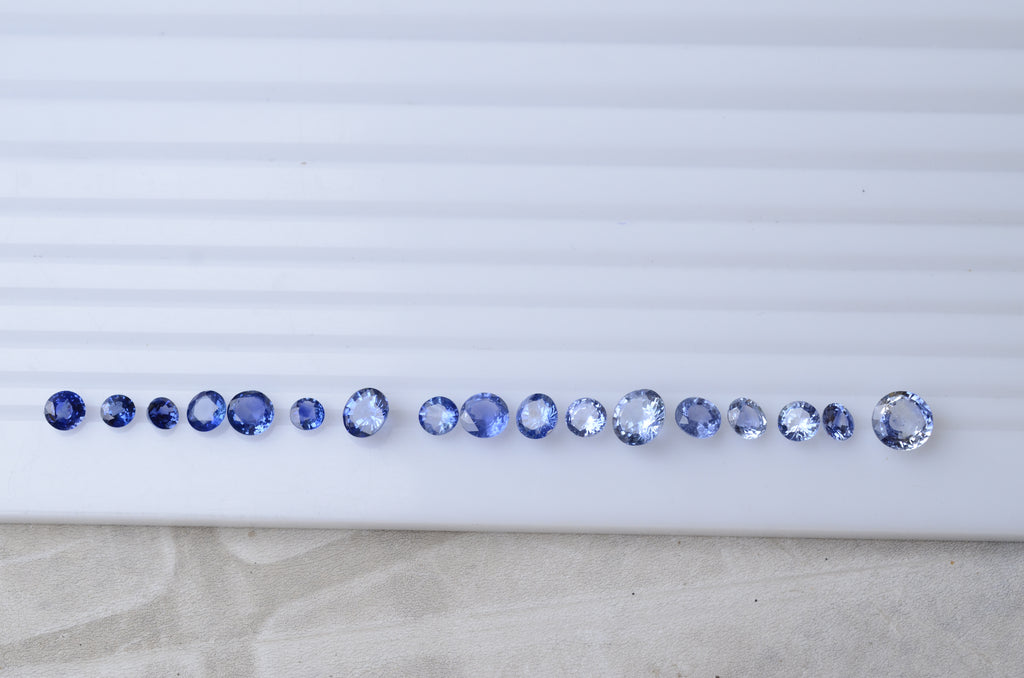Color Caveats January 17 2016
The color of a sapphire can be a difficult feature to assess. Even professionals may have varying judgments on the true color of a given sapphire. However, through decades of experience and expertise, gemologists have been able to formulate an objective means of determining the all-important color of a sapphire through its hue, tone and saturation.

The first character that determines the true color of a sapphire is its hue. The first impression or the basic color given by this gemstone is what it means by its ‘hue’. For example, at face value a sapphire may possess more than one color. A sapphire mounted on an 18K white gold engagement ring may have tints of green or even violet. This ‘greenish blue’ or ‘violetish blue’ can have a significant impact on the value and beauty of the gemstone but one must always consider other aspects of the sapphire in tandem with its hue.
The second factor involves the tone of the sapphire you are admiring. This refers to how dark or light it appears under controlled lighting conditions. Once again, the preferred tone often varied from each unique sapphire but more often than not, it is a medium to medium-dark tone that excels all others. A tone that appears lighter would be characterized as ‘un-embodied’ and one that reaches very dark tone would be negatively connoted as ‘inky’.
The final and most important character determining the color of a sapphire is it saturation. The intensity of the color plays a vital role in determining its value and aesthetics and it is often blemished by the inclusion of ‘saturation modifiers’. These appear as gray tints in blue, green and violet sapphires and brown tints in yellow, red and orange sapphires. Ideally, the best sapphires have an intense and strong saturation which is not diluted by the presence of ‘saturation modifiers’.
These three factors are the yardsticks upon which sapphires are graded and valued for color but there are also many other factors that can have a discernible impact on a sapphire’s color. For example, the presence of inclusions such as 'rutile' needles can disperse reflected light more profusely and even the cut of the sapphire itself could be adjusted to minimize color zoning and maximize color definition.
Sapphires are often praised for their rich colors and being able to assess this attribute using the features of hue, tone and saturation will aid your search in finding the perfect sapphire. However, one must keep in mind that these factors fall into a whole range of characters that determine the value of a gemstone. Color is important but it has no exclusive say in what determines a ‘great sapphire’. Just like us, a single trait cannot define a sapphire but it sure can diminish one.
Don't forget to go through our "sapphire buyer guide". We are sure it will help you make a more informed decision about investing in natural Ceylon sapphire jewelry!
Source: http://www.thenaturalsapphirecompany.com/education/judging-sapphire-quality/judging-sapphire-color/
